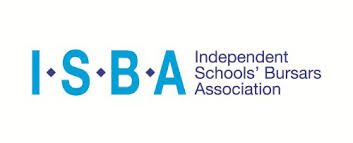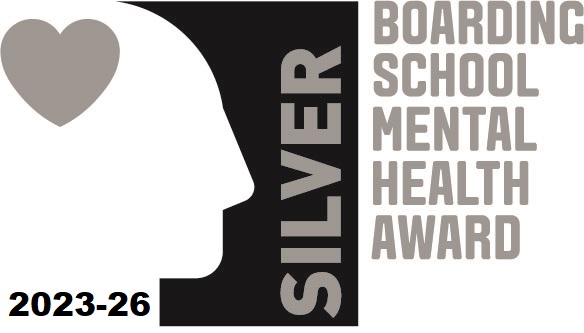Safeguarding
At Slindon College, our first and foremost priority is to keep our pupils safe and healthy.
To achieve our commitment, we will ensure continuous development and improvement of our robust safeguarding processes and procedures that promote a culture of safeguarding amongst our staff and volunteers. We are committed to inspiring, challenging and safeguarding our pupils, enabling them to become successful learners, confident individuals and responsible citizens, who are able to live safe, healthy and fulfilling lives, whilst making a positive contribution, both socially and economically, to society.
If a member of staff is concerned about the welfare of a child or young person, they will record their concern, and any observations or conversation heard, and report to one of the Designated Safeguarding Leads (DSLs) as soon as possible the same day.
If you are ever concerned about the safety or wellbeing of someone who is part of our school community please talk to our Designated Safeguarding Lead via email:
safeguarding@slindoncollege.co.uk
For more information please read our Safeguarding policy and Keeping Children Safe in Education document.
DSLs at Slindon College
All members of staff have up-to-date safeguarding training and are aware of all relevant safeguarding policies and documents.
Designated Safeguarding Lead
- Mr Adam Sharpe
Deputy Designated Safeguarding Leads
- Mrs Ali Seaby (Head of House)
- Miss Kim Thompson (Head of House)
- Mrs Terri Draper (Head of House)
- Miss Georgia-Rae Sacre (Head of House)
- Mrs Emily Lipscomne (Boarding)
- Mrs Kat Lucas (Prep)
Safeguarding Governor
-
Ann Augwhane, BSc (Hons), NPQH
E-Safety Information
E-Safety (online safety) in its broadest sense is being safe on the Internet. This includes Internet technologies and electronic communications such as mobile telephones as well as collaboration tools such as group messaging, and personal publishing or social media sites.
In order for pupils to be safe online they should be taught about the benefits of using technology and provided with safeguards and awareness in order for them to control their online experiences.
If you have any questions about e-Safety at Slindon College, or you have a concern about a member of the school community, then please contact one of the DSLs.
Safeguarding and E-Safety Updates, Bulletins and Useful Information
Useful websites for parents are:
https://swgfl.org.uk/online-safety/10-online-safety-tips/
https://twitter.com/NSPCCLearning
https://www.net-aware.org.uk/networks/
https://www.mytutor.co.uk/blog/the-parents-guide-to-teaching-your-teen-online-safety/
https://www.o2.co.uk/help/online-safety
https://www.virginmedia.com/blog/online-safety/childrens-internet-safety-test/
These websites are frequently used as part of the curriculum at Slindon College, and provide some very effective age-appropriate material to educate children and young people about the potential risks they are exposed to whilst online.
New resources launched to help support young people with SEND to Thrive Online
Childnet, a partner in the UK Safer Internet Centre, are delighted to announce the launch of the brand new Thrive Online resources. These resources are designed to empower young people with Special Educational Needs and Disabilities (SEND) to build happy and healthy online relationships.
The Thrive Online resources cover the important topics of healthy online relationships, digital wellbeing and online pornography for parents and carers of young people aged 11 and over with SEND.
You can read the article here.
Three resources to help your family manage online safety
Young people now more than ever are spending a lot of time online. From online lessons and homework to gaming and spending time with their friends, there are a range of ways that young people occupy their time whether on a phone, tablet, games console or computer.
Childnet’s Parent and Carers Toolkit is filled with quick, easy and practical things you can do to help protect your children on the internet. It includes help with how to talk to your child about how they spend their time online and how to communicate key online safety messages. The Toolkit is straightforward, easy to use and includes links to more detailed and specific information and support if you need it.
- Let’s talk about life online.
Communication with your child about their online lives is key for keeping them safe. This resource supports parents and carers with starting, managing and maintaining these conversations. It’s useful to recognise and talk with young people about the positive aspects of the internet as well as what to do if they are feeling pressured or unhappy online. It’s also important to remind your child that they can always come to you about anything. - Our Family Agreement.
A useful tool to help households come together and decide and agree upon some rules around internet use. The resource includes things to consider as part of that conversation such as screen time, sharing online and what to do if things go wrong. Many families find it useful to set some boundaries, for example around where devices are kept or limiting screen time in the hour before bedtime. There’s a space for regular review so the agreement can be easily adjusted to meet your family’s needs as they change and develop.
Being very clear about your expectations is important and our family agreement helps do exactly that. You could display it near devices or somewhere visible like the fridge to give useful reminders. - Parents’ and Carers’ Resource sheet.
A double page which provides links to further information, support and organisations that are most relevant for parents and carers. This includes our hot topics which provide information for parents and carers about key aspects of life online and how to manage them. We also link to useful sites and helplines for finding out about the age ratings on games and services, using parental controls, making reports and much more.
If you want to know where to get more information generally or have a specific concern about supporting your child online, our Parents’ and Carers’ Resource sheet it is a great place to start.
Online safety can feel like a difficult topic to manage with young people. These resources are designed to address these important issues in ways that are easy, manageable and supportive. Access the full Parent and Carers Toolkit on the Childnet website.
The following documents may also be of interest:










